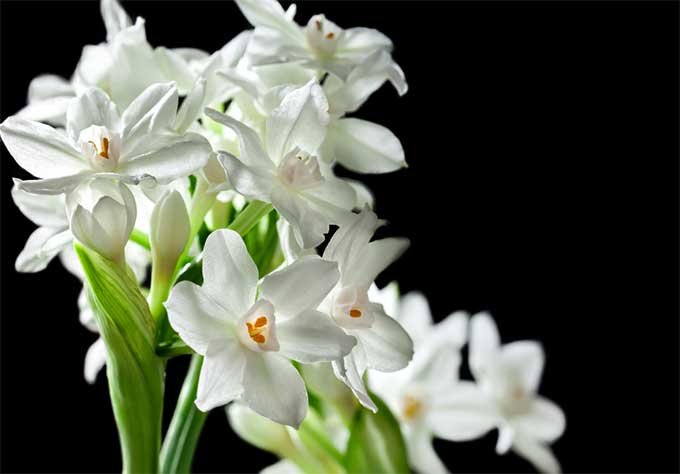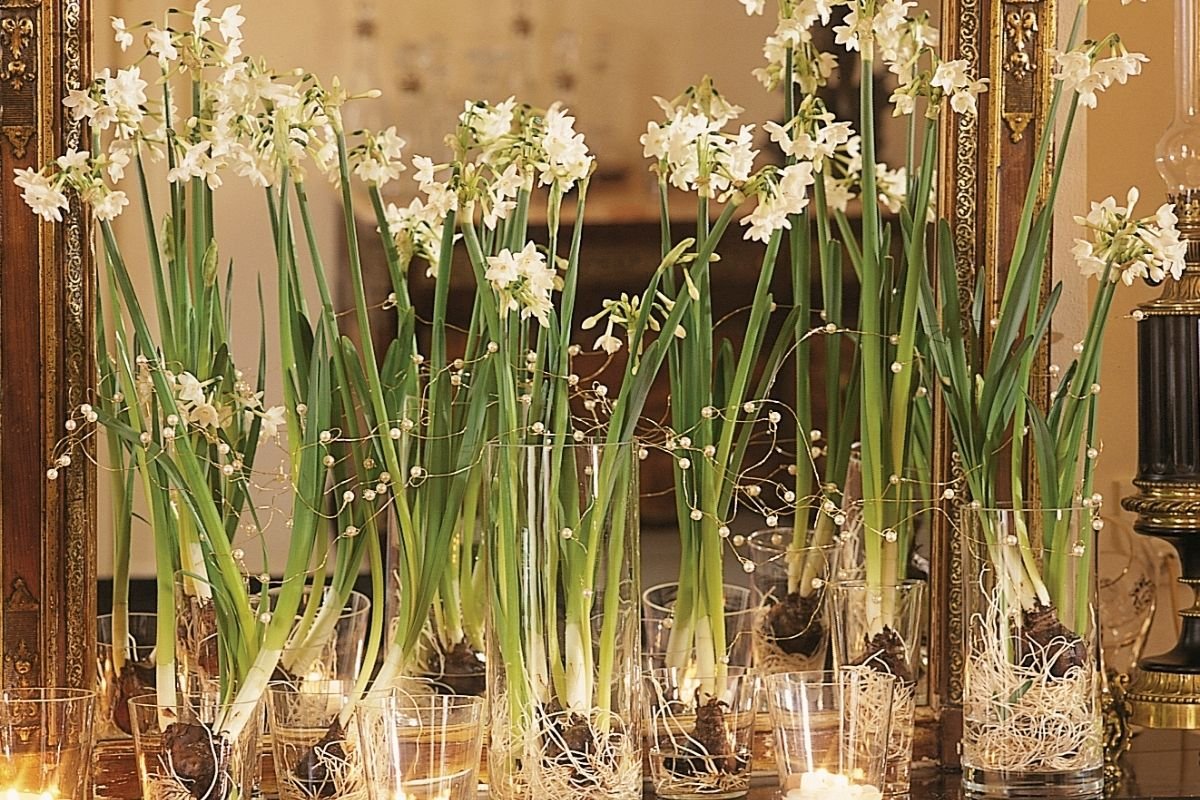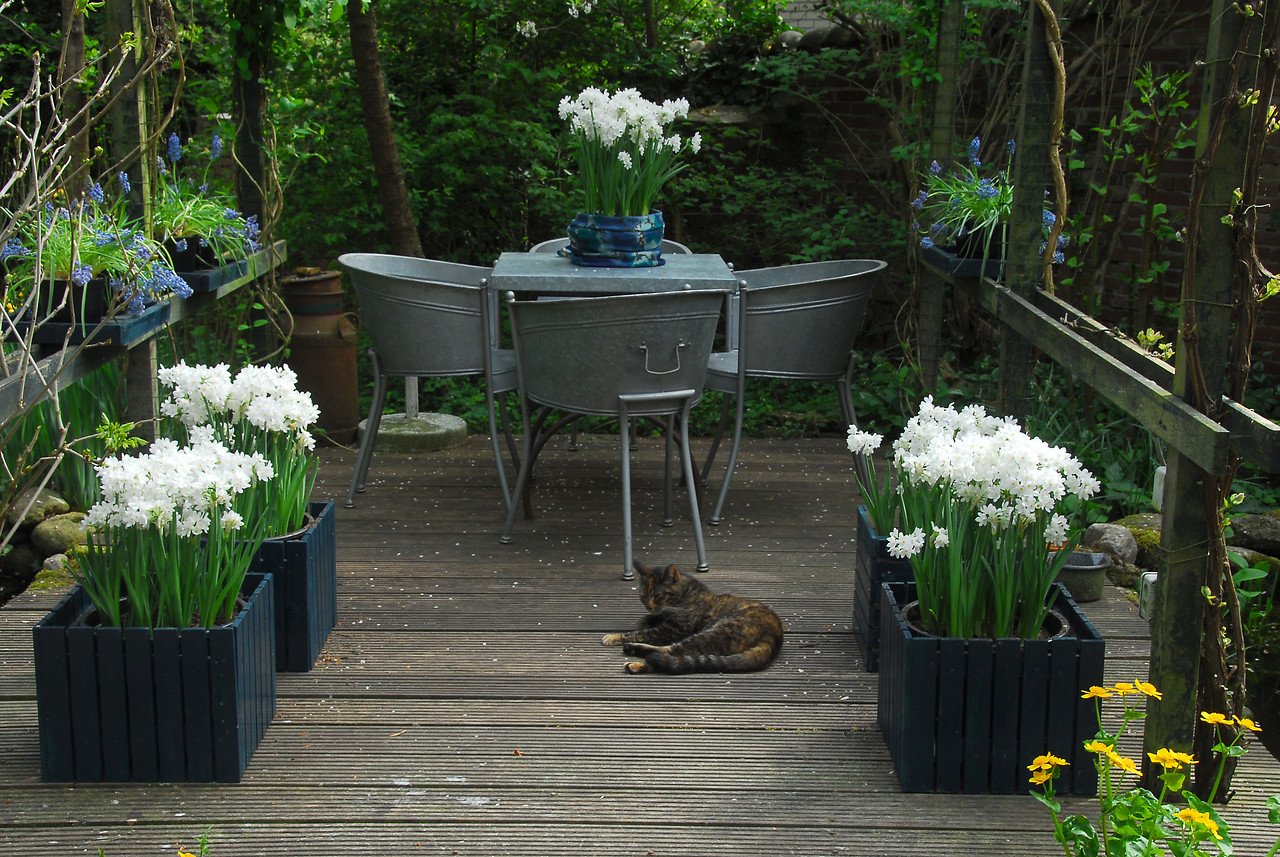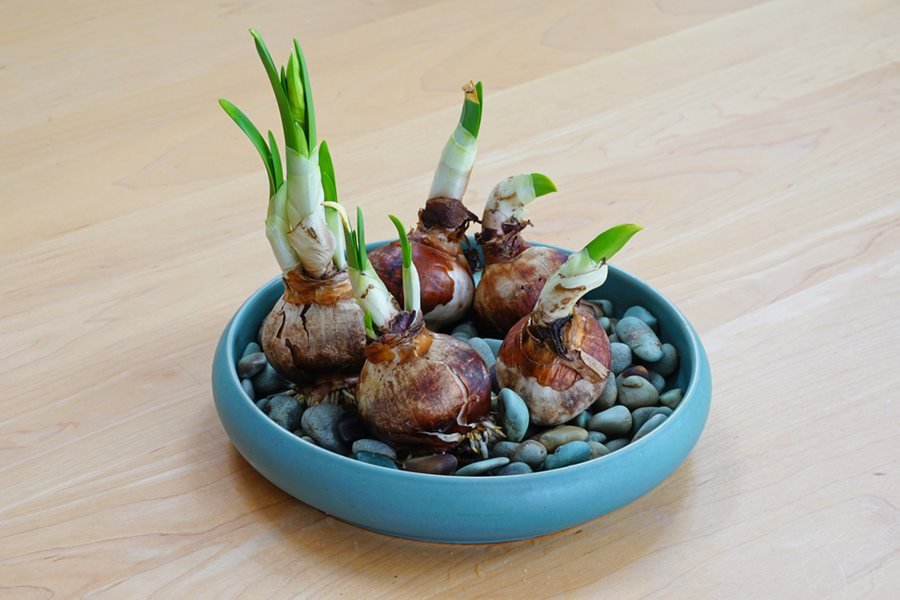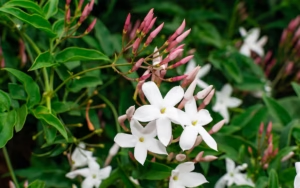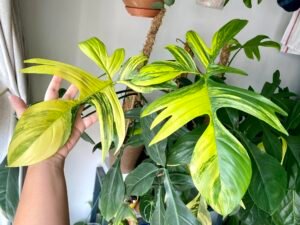Paperwhites (Narcissus papyraceus) are beautiful, delicate flowers that brighten any indoor or outdoor space. These fragrant blooms are easy to grow and care for, making them a favorite for gardeners and floral enthusiasts alike. Whether you want a splash of color during the winter months or a stunning outdoor display, paperwhites are the perfect addition to your garden. This detailed guide will provide everything you need to know about growing, caring for, and maintaining paperwhites.
Paperwhites at a Glance
| Common Name | Paperwhites |
| Botanical Name | Narcissus papyraceus |
| Family | Amaryllidaceae |
| Plant Type | Perennial bulb |
| Mature Size | 12-18 inches tall, 6-12 inches wide |
| Sun Exposure | Full sun to partial shade |
| Soil Type | Well-draining, moist soil |
| Soil pH | Neutral to slightly acidic (6.0-7.0) |
| Hardiness Zones | 8-11 (USDA) |
| Native Area | Mediterranean region |
| Toxicity | Toxic to humans and pets if ingested |
Paperwhites Care
Paperwhites are loved for their simplicity and elegance. Whether you grow them indoors or outdoors, their care needs remain relatively simple. Here are the essentials:
- Light: Paperwhites thrive in full sun but can tolerate partial shade. Indoors, place them near a sunny window.
- Water: Keep the soil moist but not soggy. Overwatering can lead to bulb rot.
- Soil: Use well-draining, nutrient-rich soil. A standard potting mix works well for indoor planting.
- Temperature: Paperwhites prefer temperatures between 60-70°F (15-21°C). Avoid placing them near heat vents indoors.
- Fertilization: Paperwhites do not need heavy fertilization. When grown indoors, bulbs contain all the nutrients they need.
By meeting these basic needs, you can enjoy healthy, vibrant paperwhites that bloom beautifully.
Growing Paperwhites Indoors
Growing paperwhites indoors is one of the most popular ways to enjoy these flowers, especially in the winter months when outdoor gardening may not be possible. Here’s a step-by-step guide:
1. Choose the Right Bulbs
Select healthy, firm bulbs that show no signs of mold or rot. Larger bulbs typically produce bigger blooms.
2. Pick a Container
Paperwhites do not require soil to grow indoors. You can plant them in decorative containers with gravel, pebbles, or a traditional pot with soil.
- Without Soil: Place the bulbs on top of gravel or pebbles and add water just below the base of the bulb.
- With Soil: Fill a container with potting soil and bury the bulbs about halfway, with the pointed tips facing up.
3. Provide Proper Lighting
Place the container near a sunny window where it can receive bright, indirect light. If necessary, use grow lights to supplement natural light.
4. Water Regularly
- If growing in gravel, keep the water level just below the bulb base.
- If growing in soil, water when the top layer feels dry to the touch.
5. Support Growth
Paperwhites can become tall and top-heavy. Use stakes or decorative supports to keep them upright as they grow.
6. Enjoy the Blooms
Paperwhites bloom about 3-6 weeks after planting, making them ideal for holiday decorations or gifts.
Growing Paperwhites Outdoors
Paperwhites can also be grown outdoors in mild climates. Here’s how to grow them successfully in your garden:
1. Select a Planting Site
Choose a sunny location with well-draining soil. If your soil is heavy or clay-like, mix in compost or sand to improve drainage.
2. Plant the Bulbs
- Plant bulbs in the fall, before the ground freezes.
- Dig holes about 4-6 inches deep and space the bulbs 3-5 inches apart.
- Place the bulbs with the pointed end facing up.
3. Watering
Water the bulbs thoroughly after planting. Once established, paperwhites are drought-tolerant and require minimal watering.
4. Protect from Frost
In colder climates, protect the bulbs by applying a layer of mulch. This helps insulate the soil and prevents frost damage.
5. Naturalizing Paperwhites
Paperwhites can spread and naturalize over time. Let the foliage die back naturally to nourish the bulbs for next season’s growth.
Types of Paperwhites
While all paperwhites belong to the Narcissus genus, there are several popular varieties to choose from:
- Ziva: The most common variety, known for its pure white flowers and strong fragrance.
- Galilee: Features slightly larger blooms and a milder fragrance.
- Inbal: A compact variety with a delicate fragrance, ideal for indoor growing.
- Ariel: Blooms early and produces multiple stems per bulb.
Each variety offers something unique, allowing you to choose the best paperwhites for your needs.
Pruning
Paperwhites require minimal pruning, but some maintenance can help them look their best:
- After Blooming: Once the flowers fade, cut the flower stalks down to the base.
- Leave the Foliage: Allow the leaves to yellow and wither naturally, as they provide nutrients to the bulb for future blooms.
Do not remove green foliage too early, as it can impact the bulb’s ability to store energy.
Propagating Paperwhites
Paperwhites are most commonly propagated through bulb division. Here’s how to do it:
- Dig Up the Bulbs: After the foliage has died back, carefully dig up the bulbs.
- Separate Offsets: Look for smaller bulbs (offsets) attached to the main bulb. Gently separate them.
- Replant: Plant the offsets in the same manner as mature bulbs. They may take 1-2 seasons to bloom.
How to Grow Paperwhites from Seed
Growing paperwhites from seed is possible but uncommon, as it is a slow process:
- Collect seeds from mature flower heads.
- Sow seeds in a seed-starting tray filled with moist soil.
- Keep the tray in a warm, sunny spot and mist regularly.
- Transplant seedlings to the garden after 1-2 years.
Patience is key when growing paperwhites from seed, as it can take several years for plants to bloom.
Potting and Repotting
Paperwhites grown indoors may need to be repotted:
- When to Repot: Repot bulbs if they become overcrowded.
- How to Repot: Gently remove bulbs, separate them, and replant in fresh soil or gravel.
Overwintering
Paperwhites grown outdoors in colder climates require winter protection. Apply mulch to insulate the bulbs or dig them up and store them in a cool, dry place.
Common Pests and Plant Diseases
Paperwhites are generally pest-resistant but can be affected by:
- Narcissus Bulb Fly: Lay eggs in bulbs, causing rot.
- Aphids: Suck sap from leaves, weakening the plant.
- Fungal Rot: Caused by overwatering or poor drainage.
How to Get Paperwhites to Bloom
To encourage blooming:
- Use Fresh Bulbs: Older bulbs may not bloom as vigorously.
- Provide Enough Light: Bright, indirect light is key for blooming indoors.
- Avoid Overwatering: Soggy conditions can inhibit blooming.
Common Problems with Paperwhites
- Drooping Stems: Caused by insufficient light or overwatering.
- Lack of Blooms: May occur if bulbs are not healthy or mature.
Paperwhite Bulb Buying Tips
- Purchase bulbs from reputable suppliers.
- Look for firm, unblemished bulbs.
- Larger bulbs produce more flowers.
Read also: White Daffodils: How to Grow and Care for White Daffodils

